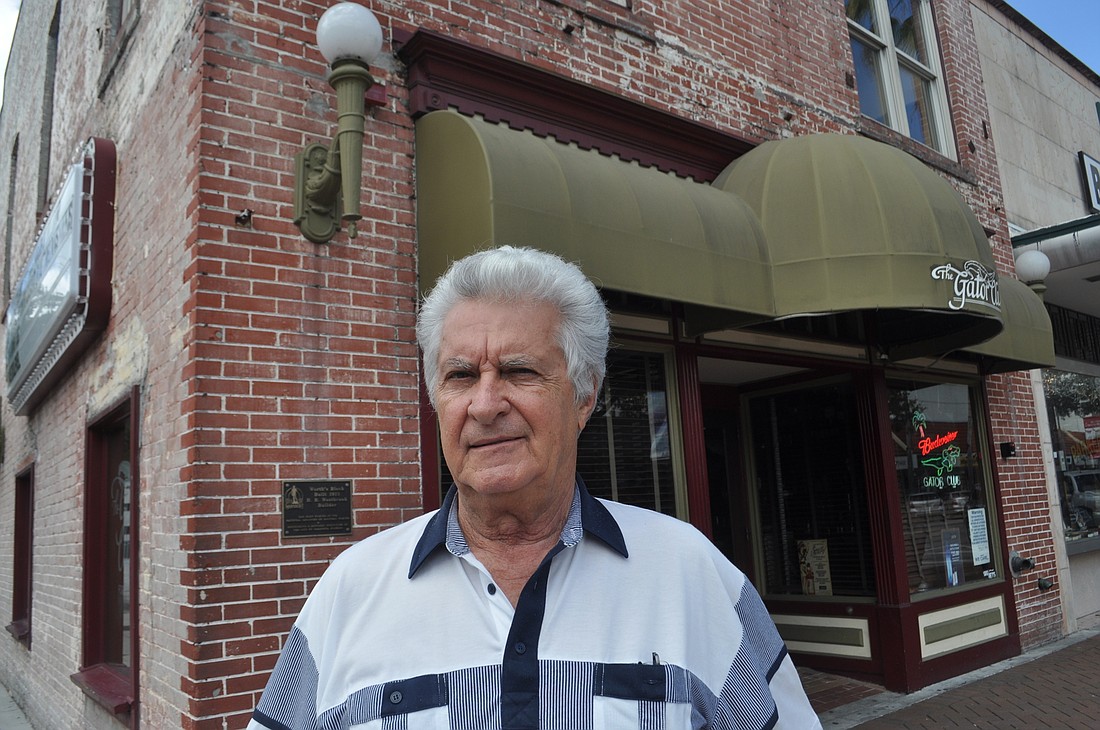- November 15, 2024
-
-
Loading

Loading

For a while now, Ernie Ritz has been worried about losing an essential part of the fabric of downtown Sarasota.
In 2009, Ritz helped establish the downtown historic district, a national designation for the heart of the city that led to the placement of a wayfinding sign on Interstate 75. By 2015, however, Ritz felt that designation wasn’t doing enough to discourage the demolition or alteration of buildings within the historic district — an issue he raised with city officials.
Three years later, Ritz remains concerned about a lack of historic protections for downtown properties. That’s why on Tuesday, the Downtown Improvement District discussed potential policies that could promote preservation and discourage demolition within the downtown core.
Ritz, now the chairman of the Downtown Improvement District, was hopeful the group could land on a solution for saving buildings deemed historically significant.
“We’re going to investigate this further,” Ritz said.
The board heard a presentation led by Tony Souza, former Downtown Sarasota Alliance chairman and a historic preservation consultant who also helped establish the downtown historic district. Souza and city staff members outlined opportunities for incentivizing preservation and making it more challenging to tear down an old building.
Although the board voted 4-1 to continue to research options for encouraging historic preservation, several board members expressed skepticism about how effective any policy could be in the face of the financial incentives to redevelop a property.
Board member Ron Soto, the lone dissenting vote, was concerned the window for meaningfully preserving downtown’s history had passed.
“As somebody who’s lived here for 62 years, I think we lost it,” Soto said. “And we can’t get that back.”
Souza disagreed with Soto’s outlook, pointing to other places where establishing heightened historic preservation standards appeared to be a daunting task but nevertheless proved effective — and beneficial for the community, he said.
He thinks it’s possible to save older buildings, but he acknowledged getting meaningful protections in place would be difficult. During his presentation, Souza highlighted one option he suggested could be effective: creating a local historic district, which carries more stringent oversight than the national designation. He said it’s been a useful policy in other cities, and he was surprised local officials hadn’t already taken that sort of step to protect downtown’s history.
“It’s so unusual that Sarasota has not done this, being this sophisticated city,” Souza said.
The creation of a local historic district is a voluntary process that requires the support of property owners within the boundaries of the district. Once a local district is established, buildings within those boundaries would need to receive city approval before a property owner could make any adjustments to the structure, a standard that does not apply to the national historic district.
Souza said there are benefits to local designation. Property owners are eligible for an ad valorem tax exemption when making improvements to a historic structure. Commercial property owners can receive a historic preservation tax credit for rehabilitating historic structures. Still, he acknowledged it could be a hard sell for downtown property owners.
“You’re going to get developers saying, ‘You’re taking my rights away,’” Souza said.
DID board members said they’ve already heard from developers interested in tearing down existing structures and constructing new 10-story buildings on Main Street, the maximum height allowed in the downtown core. DID Operations Manager John Moran suggested it would be hard to produce incentives that would outweigh the financial benefits of tearing down and building up for a developer.
“I can go 10 stories, I can create a source of net income for myself, my heirs, their heirs and their heirs,” Moran said.
Soto questioned whether the creation of a local historic district would prohibit owners of older buildings from making necessary improvements. He said businesses in the 1300 block of Main Street, including his own, have dealt with issues associated with termites in their building. He worried some buildings might be too old to effectively save and suggested tenants could be stuck with suboptimal spaces if there were limits on new construction.
Board member Eileen Hampshire asked whether a local historic district would be overly onerous for downtown property owners.
“If you have a whole block that is really beyond redemption — if we pass this, will they not be able to do anything but improve it?” Hampshire said.
Souza and Cliff Smith, a senior planner with the city, both said that would be up to the judgment of local officials. Owners of historically designated properties can apply to alter the building, but they need to obtain a certificate of appropriateness from the city before any project can move forward.
As the DID continues to ponder the options for historic preservation downtown, Souza expressed hope the group would land on a solution it liked.
If the board doesn’t, Souza was troubled about what the future may hold for downtown.
“It doesn’t come back,” Souza said. “We need to have one little place here that talks about what Sarasota was.”